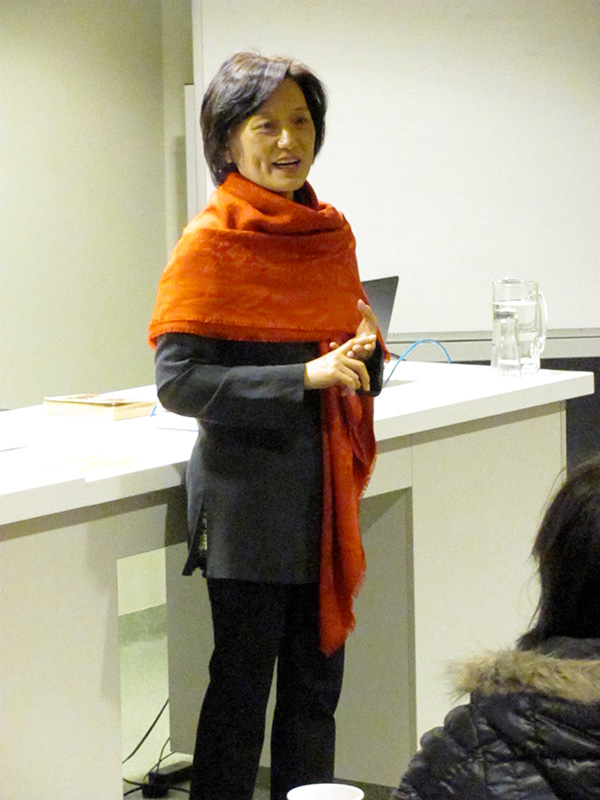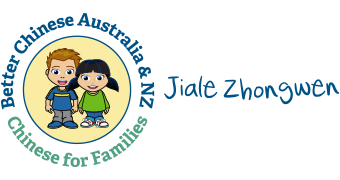Better Chinese founder visits Sydney’ July 2011
 Li-Hsiang Yu Shen, founder and chief editor of publishing company Better Chinese, visited Sydney from 7 to 11 July this year. She gave half day and full day workshops to interested Chinese teachers on the 7th and 8th and also presented at the national conference on the 10th. It was my first time to meet Yu Laoshi or in fact anyone from Better Chinese and during the time we spent together in Sydney I gained a much deeper understanding of both the company and the pedagogy behind the teaching materials.
Li-Hsiang Yu Shen, founder and chief editor of publishing company Better Chinese, visited Sydney from 7 to 11 July this year. She gave half day and full day workshops to interested Chinese teachers on the 7th and 8th and also presented at the national conference on the 10th. It was my first time to meet Yu Laoshi or in fact anyone from Better Chinese and during the time we spent together in Sydney I gained a much deeper understanding of both the company and the pedagogy behind the teaching materials.
Better Chinese was founded by Yu Laoshi and her husband CK Shen after they retired from their careers as diplomats. During their years living abroad they found repeatedly that their daughters had no interest in learning Chinese and could not help but notice how dull the Chinese teaching materials looked in comparison to those from European and English speaking countries. The aim of Better Chinese is to change this – to develop a wide range of materials which make learning Chinese fun and meaningful for students. Better Chinese started with a story book club and language centre in Hong Kong. Yu Laoshi and CK Shen retired from comfortable jobs in the diplomatic service and, along with their son-in-law James who is the CEO, threw all their energies into developing the company. While all this was already known to me, what struck me from talking to Yu Laoshi were both the strong sense of mission and also the challenges involved in their second careers in publishing – it certainly has been a meaningful but not an easy option.
Yu Laoshi covered many areas in her presentations in Sydney. I was impressed the strong emphasis not only on pedagogy but also on educational philosophy and child development. Usually in our Chinese teaching professional development in Australia we restrict ourselves to very specific discussions of Chinese language classroom teaching and tend not to take a wider perspective or engage with the broader philosophies behind children’s mainstream classroom education. Many teachers who have started to use ‘My First Chinese Words’ in the classroom have noticed how well children respond and I think this is because these simple story books connect so well with what is meaningful and engaging to children. Yu Laoshi spent a lot of time discussing both the importance of play and storytelling in children’s lives and pointed to the ideas of educational thinkers such as Howard Gardner (multiple intelligences) and Reggio Emilia (emphasizing the child’s capability and potential).
Yu Laoshi also gave some interesting insights into Chinese language teaching in the US. Interest in learning Chinese has increased exponentially over the last few years so much so that there is a well-known slogan ‘Chinese is the new French’ and Chinese teachers now dominate the national modern language teachers association. As an example of the level of interest, a local San Francisco elementary (primary) school‘Starr King Elementary’, which had low student numbers and was on the verge of closure, introduced a Mandarin immersion program in an effort to boost enrolments. The parent community saw this as a sign that Starr King was a high quality academic school and student numbers increased dramatically. Yu Laoshi also showed slide shows of some best practice examples of Chinese language teaching in the US which included an elementary school where 80% of the mainstream classroom instruction was in Chinese. Immersion is a very popular form of language learning in the US and Yu Laoshi told me that there are many schools setting up Chinese language immersion programs now, particularly in Utah.
Better Chinese is based in Palo Alto which is in the San Francisco Bay Area in California and home to many famous Silicon Valley internet and technology companies such as Apple, Facebook and Google. It’s not surprising then that Better Chinese is a leader in the field of Chinese language instruction and online learning. The Better Chinese online curriculum gives students interactive listening, speaking, reading and writing practice and is fully integrated with the core curriculum. A successful trial project has already been run using Better Chinese apps for Ipads and this will be generally available soon.
In Australia we do face some different circumstances which make some lofty goals seem out of reach. For example you can’t achieve in one lesson a week what can be achieved in a full immersion program. Nonetheless we can still aim high and try to achieve as much as is possible in the time which is available to us. Teaching skills development and high quality resources are critical to achieving this. I believe that being a teacher involves life-long learning and one of the best ways to learn is from others which is why having a vibrant and dedicated professional association is so important. For me it was a wonderfully refreshing and eye opening experience to listen to Yu Laoshi’s presentations, not only for the depth of thought and creativity behind her pedagogy, but also just for the surprisingly different perspective of Chinese language learning in the US.
Belinda Dello-Iacovo
For more information about Better Chinese please email me at [email protected]
